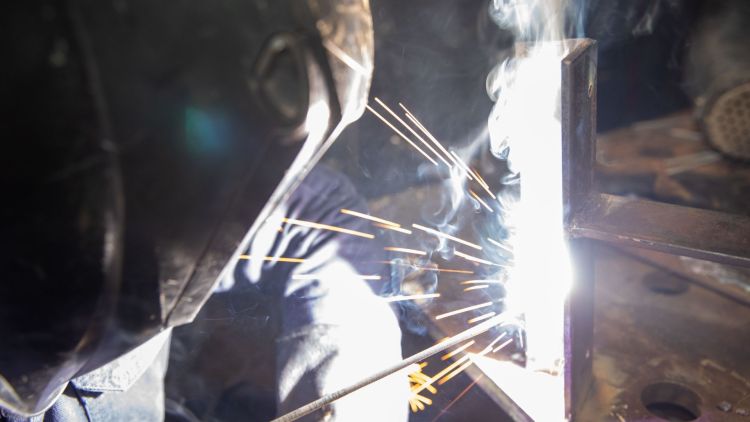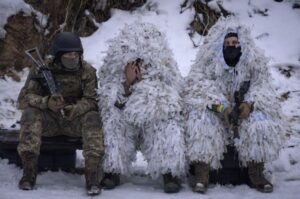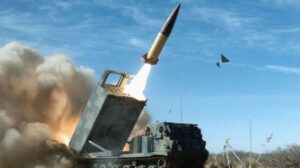Imagine discovering that crucial components of your car were put together with faulty parts. Now imagine that car is not a car at all but a nuclear-powered aircraft carrier or submarine—and those parts are faulty welds holding things together.
That’s pretty much the situation the US Navy is facing right now after identifying faulty welds on three major vessels: the aircraft carrier USS George Washington (CVN-73) and the brand-new submarines USS Hyman G. Rickover (SSN-795) and USS New Jersey (SSN-796).
What the hell is going on, and how did we get here?
The Discovery of Faulty Welds
According to reports, this mess started when Huntington Ingalls Industries-Newport News Shipbuilding (HII-NNS), one of the few shipyards responsible for building and maintaining the Navy’s nuclear fleet, realized that some welders had not been following proper procedures.
These aren’t just any ships—they are vital components of the US military’s ability to project power globally. The stakes couldn’t be higher.
On September 24, Navy Secretary Carlos Del Toro was initially informed that welders at HII-NNS had bypassed proper welding procedures on components for these ships.
These procedural violations didn’t involve malicious intent, but the lapses were significant enough to trigger alarms. No shit, Sherlock!
“We recently discovered through internal reporting that the quality of some welds did not meet our high-quality standards. Upon this discovery, we took immediate action to communicate with our customers and regulators, investigate, determine root cause, bound these matters and insert immediate corrective actions to prevent any recurrence of these issues,” a September 24 memo read.
— from Assistant Secretary of the Navy for Research, Development, and Acquisition Nickolas Guertin, cited by USNI News
The Navy then responded to this memo, saying they have acknowledged and are conducting an investigation into the welding problem in a September 26 statement to USNI News.
“The Navy is aware of the issue and a thorough evaluation is underway to determine the scope. The safety of our Sailors and our ships is of paramount importance. We are working closely with industry partners to address this situation and will provide additional information when available,” reads the statement.
— cited by USNI News
It was later revealed that the faulty welds had affected the USS George Washington (CVN-73), the sixth aircraft carrier in the Nimitz class that had just completed a major overhaul, and two brand-new Virginia-class submarines, the USS Hyman G. Rickover (SSN-795) and USS New Jersey (SSN-796), which were only recently commissioned.
USS Hyman G. Rickover (SSN 795) arrives at Naval Submarine Base New London in Groton, Conn., December 20, 2023. (DVIDS)
Are These Ships Safe?
One of the first questions that comes to mind is: Are these ships safe to operate?
According to the Naval Sea Systems Command (NAVSEA), the answer is yes—for now, at least.
NAVSEA has assured Congress and the public that the faulty welds don’t affect the ships’ safety or operational capacity.
So, while the situation is far from ideal, the ships won’t be heading back to port for massive repairs just yet.
That said, a deeper investigation is underway to determine the full scope of the problem. Inspections on 23 other ships, either in construction or maintenance, are also being conducted to see if similar issues arise.
Captain Clay Doss, a spokesman for Del Toro, told Breaking Defense in a statement on Friday, October 4, that the results from these inspections are expected in mid-October.
A Problem in the Welding Process
Obviously, the issue boils down to improper welding procedures.
These aren’t the kinds of welds you’d find on a car chassis—they’re critical parts that hold together components on submarines and aircraft carriers, two of the most advanced and strategically important types of vessels, I might add, in our Navy.
At Newport News Shipbuilding, some welders—knowingly—did not follow the required steps for welding these vital components.
While “malicious intent” has been ruled out, it’s still incredibly concerning.
These procedural lapses went against the Navy’s high standards, and now the entire shipyard is under the microscope.
Newport News Shipbuilding, owned by Huntington Ingalls Industries (HII), has pledged to work closely with the Navy to fix the issue and prevent it from happening again.
“Upon discovery of some welders not consistently following procedures we followed our protocol and took action to communicate with our customers and regulators in a timely manner and began working the issue with the Navy.”
— an HII spokesperson said in a statement to USNI News, reported on Thursday, October 3
HII-NNS has implemented immediate corrective actions, including ramping up training for their welders to make sure everyone is following the book from now on.
Congress Wants Answers
Unsurprisingly, this situation has caught the attention of lawmakers.
Senior members of the House Armed Services Committee (HASC) have written to Navy Secretary Del Toro demanding more information.
HASC basically wants to know how deep this problem runs, how long the Navy has been aware of it, and what steps are being taken to correct the issue.
In their letter, HASC leaders, including Rep. Mike Rogers (R-Ala.) and Rep. Adam Smith (D-Wash.), stressed the importance of transparency in dealing with this issue.
USS New Jersey (SSN 796) arrives at Naval Weapons Station Earle Pier for a commissioning ceremony on Sept. 6, 2024. (DVIDS)
They gave Del Toro until October 11 to respond.
Congress is particularly concerned because these ships are essential to US national security.
If something were to go wrong due to these faulty welds, the consequences could be disastrous, both for the sailors who serve aboard these vessels and for the military’s overall readiness.
Now What?
While the Navy and HII-NNS work on assessing and fixing the faulty welds, the Department of Justice has been brought in to investigate whether there were any breaches of contract or false claims made by the shipyard.
This is no small matter—HII could face serious legal repercussions if it’s determined that the company misled the Navy or failed to uphold its contractual obligations.
Navy officials are working to ensure that welds on these ships are properly inspected and corrected, but it’s clear that there’s still a long way to go.
Secretary Del Toro has promised a full review of operations at Newport News Shipbuilding and pledged that sailor safety remains the Navy’s top priority.
Why It Matters
The USS George Washington, USS Hyman G. Rickover, and USS New Jersey aren’t just any ships; they’re critical components of the Navy’s ability to defend America and its allies.
The George Washington, in particular, is an aircraft carrier capable of projecting American airpower across the globe, while the two submarines are part of the Virginia-class—a fleet of fast, stealthy submarines designed to operate in both coastal and deep-water environments.
These vessels are vital to keeping the US military prepared for any potential conflict, from deterrence missions to actual combat scenarios.
Faulty welds threaten not only the functionality of these vessels but also the trust between the Navy and its contractors.
While these welds don’t currently impact ship safety, any lapses in quality control raise questions about the overall readiness and reliability of the Navy’s fleet.
Final Thoughts
The Navy and Newport News have some serious work ahead of them, but for now, the three ships in question—along with the additional 23 under review—are safe to operate. However, this incident serves as a reminder of the importance of quality assurance in military operations.
When you’re dealing with nuclear-powered aircraft carriers and submarines, there’s no room for error.
As the investigation continues and corrective actions are implemented, it’s clear that both the Navy and Congress are taking this issue seriously.
Hopefully, this is a wake-up call for everyone involved to ensure that no shortcuts are taken when it comes to the safety and reliability of the US fleet.
—
Disclaimer: SOFREP utilizes AI for image generation and article research. Occasionally, it’s like handing a chimpanzee the keys to your liquor cabinet. It’s not always perfect and if a mistake is made, we own up to it full stop. In a world where information comes at us in tidal waves, it is an important tool that helps us sift through the brass for live rounds.



